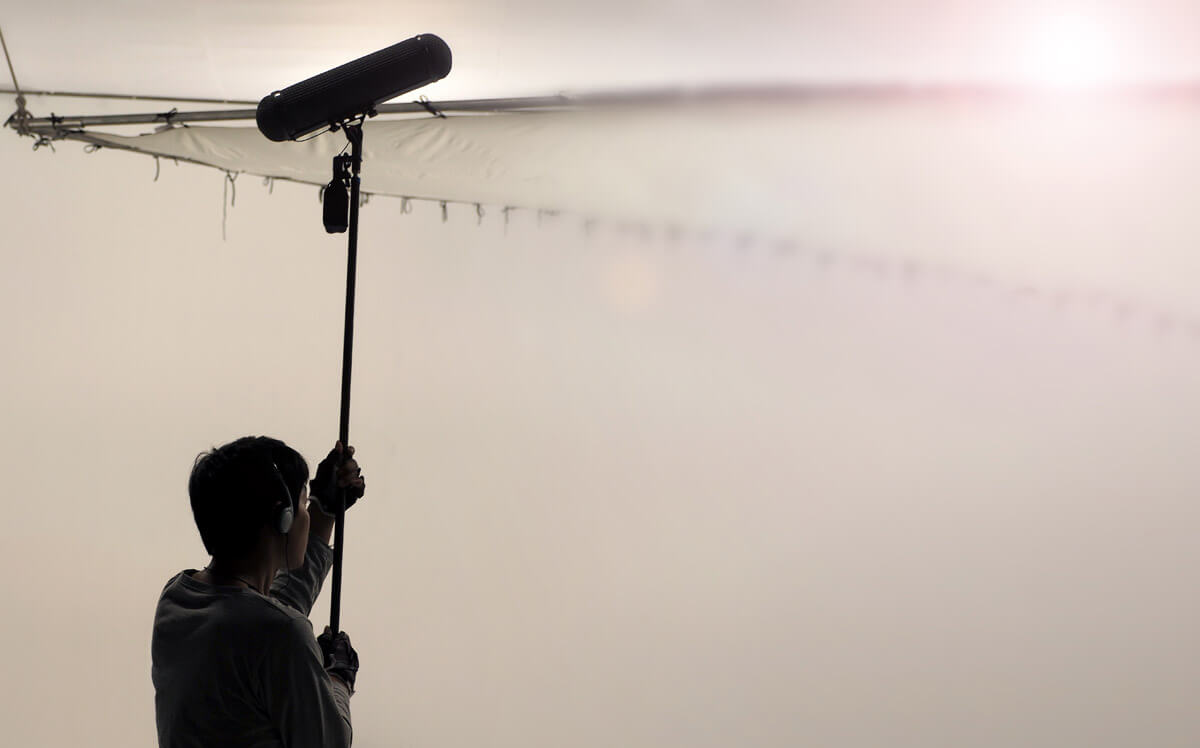
[vc_row][vc_column width=”1/1″][vc_column_text]
Sound is 50% of the moviegoing experience, a famous quote by the legendary filmmaker George Lucas and SFX, or sound effects are a crucial aspect of that, as important as the music score, the acting or other special effects. Sound effects creation and editing even has its own category at the Academy Awards.
The use of SFX isn’t limited to movies, but other forms of media are heavily reliant on them, from games, radio, podcasts, TV, commercials, software, YouTube videos and many others. The demand for professional audio is growing as new forms of multimedia and digital content emerge. So for those with a passion for recording sound, this is a great time to get started.
[/vc_column_text][/vc_column][/vc_row][vc_row][vc_column width=”1/1″][minti_headline type=”h2″ size=”fontsize-l” weight=”fontweight-600″ align=”align-left”]SFX meaning[/minti_headline][vc_column_text]
Just to clear things up, the term SFX can also be applied to any special effects, however it has become widely used to describe “sound effects” with many professional sound designers, field recordists and libraries adopting the term.
[/vc_column_text][/vc_column][/vc_row][vc_row][vc_column width=”1/1″][minti_headline type=”h2″ size=”fontsize-l” weight=”fontweight-600″ align=”align-left”]Sound FX creation [/minti_headline][vc_column_text]
I have been recording sound for almost 20 years and as a child, I remember being fascinated with anything that made a loud, weird or comical noise – who doesn’t like a good fart sfx?. That obsession never left and at the age of 17, I recorded my first. It all started with a PZM microphone attached to a wooden board. Recording a car passing by into an old Minidisc recorder. Fast forward to today and I just recorded my 90,000th sound. I never thought I’d have created a library offering free sfx, but here we are today!
These days I am a little more professional, owning several high-end microphones and recorders and I have traveled around the world, capturing everything from nature, big cities and urban environments, animals and more. I also love designing SFX, everything from monsters, science fiction atmospheres through to cinema sfx.
Typically those who are just starting out as a field recordist or sound designer have limited budgets. Therefore they’ll purchase an all-in-one recorder/microphone combo, such as the Zoom H4N. These handy recorders have other benefits too, such as not requiring any cables and have large internal hard drives, allowing many hours of SFX to be recorded and simply transferred to a computer for editing.
The next step up is usually to a standalone solid state recorder and a professional microphone. These days there are many recorder options available starting from a couple of hundred dollars through to thousands. Companies like Sound Devices lead the way with high-end recorders, however these can still be a little out of reach for some. Other options from companies such as Zoom can still get you great recordings at a fraction of the price.
[/vc_column_text][/vc_column][/vc_row][vc_row][vc_column width=”2/3″][minti_headline type=”h2″ size=”fontsize-l” weight=”fontweight-600″ align=”align-left”]What microphones are best for recording SFX?[/minti_headline][vc_column_text]
Understanding how microphones work and what types of microphones work best for different locations and scenarios is something any budding SFX recordist should learn. The difference between a dynamic or condenser microphone, what polar patterns are and how they should be used, mic placements and techniques for capturing the best possible sound effects are all essential to know.
As previously mentioned, recorder/microphone combos such as the Zoom H4N have built in microphones. These typically are small condensers but don’t be fooled by their size, as they can record high quality professional audio and SFX. A condenser microphone such as these, or any condenser requires 48v of “phantom power” supplied by the recorder itself. As such, condenser microphones are more sensitive. Dynamic microphones are not powered and are less sensitive. However that doesn’t mean they’re inferior, just that one might be chosen over the other depending on what you’re recording.
Shotgun microphones are long, thin condensers and offer more focused sound recording. They reject sound from the sides and rear meaning they are great for capturing dialogue or for when you want to record a sound effect without also capturing unwanted audio in a nosier location.
Polar patterns refer to the microphones directionality. A standard microphone usually has a cardioid pattern which means the microphone is most sensitive at 0 degrees and least sensitive at 180 degrees. But more expensive microphones may offer omnidirectional, cardioid, supercardioid, hypercardioid and figure of 8.
[/vc_column_text][/vc_column][vc_column width=”1/3″][minti_image img=”135540″][/vc_column][/vc_row][vc_row][vc_column width=”1/1″][minti_headline type=”h2″ size=”fontsize-l” weight=”fontweight-600″ align=”align-left”]Earn money from your SFX[/minti_headline][vc_column_text]
Can you earn a living from your SFX? The answer is absolutely and I wrote an article about this a while ago. There are many ways to make money from your sound fx recordings, or just from working with sound if that’s your aim. Obviously there are SFX libraries like ZapSplat. Selling your sounds to libraries is a quick and easy way to make money, however they have become more and more saturated as technology improvements make recording more accessible to more people. If you wish to sell them in a library, be sure to find out what gaps there are in their offerings and work around that.
Designing audio branding elements is another way to make money and often the rewards are higher. Large corporations will pay thousands for an audio logo.
Working directly with clients as a sound designer also offers a way to earn money. It could be making the SFX for a game or app.
While it isn’t as easy to start a career recording and designing sound fx today as it has been in the past, there are still plenty of options available to anyone looking to start. I hope this article has helped and good luck. Don’t forget to send us your SFX to be included here at ZapSplat!
[/vc_column_text][/vc_column][/vc_row]
Download SFX
Checking your download limits
Add to list
Please select the list to add to.
List Details